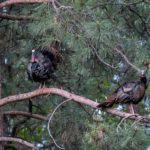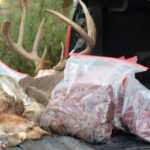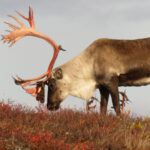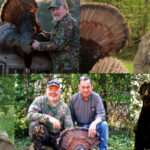Hunting over a plastic deer might seem like something you only see on TV, but anyone can effectively decoy deer. Follow these pointers.
The buck’s hair bristled and his ears pinned back as he closed the distance. I had just blown a few grunts down into a cattail marsh — a known bedding area — and this buck responded quickly. I had an Ultimate Predator bow-mounted deer decoy attached to my Mathews VXR. It was configured as a doe, so the buck was convinced that his opponent was somewhere behind the “doe” he was seeing on the front of my bow.
That explains why he began posturing and circling to find the “buck” that had been grunting. I easily drew my bow without alerting the buck — remember, he was 100 percent convinced that I was a doe. I grunted with my mouth to stop him broadside at 20 yards. My arrow pierced his heart, and he mule-kicked before tearing off down into the marsh where he fell as soon as he was out of view.
Decoying deer is a super-effective tactic when attempted within the right parameters. If decoying sounds like something you’d like to try this fall, consider these principles.
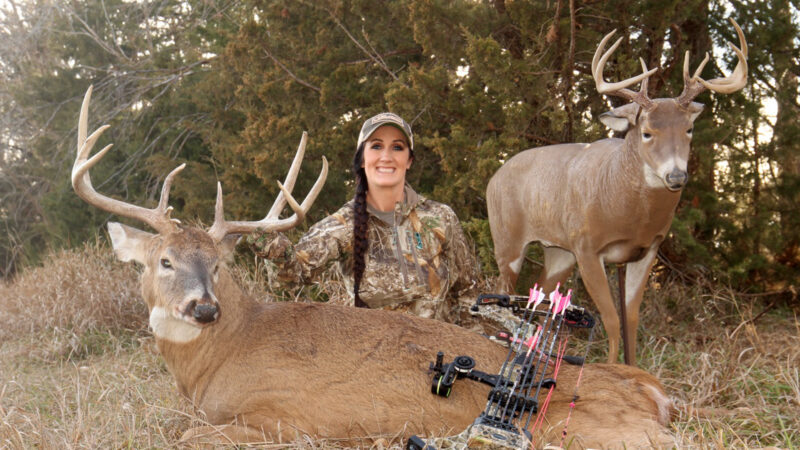
Timing Is Important
As bucks approach the breeding season (the rut), testosterone levels elevate, which causes them to behave aggressively. That’s why aggressive tactics such as grunting, rattling, and even decoying become very effective immediately prior to and during the breeding season.
As a quick side note, if you’re unsure about rut dates for your hunting area, you might consider purchasing the HuntStand Pro Whitetail app. Along with tons of other advantageous features, you’ll get access to the Nationwide Rut Map. This will give you projected dates for the pre-rut, peak rut, waning rut, pre-second rut and second rut.
Across most of the whitetail’s range, the aggressions begin elevating at the end of October. That’s when decoying expert and Winchester Deadly Passion host Melissa Bachman gets serious about decoying whitetails in the Midwest.
“You might be able to decoy in some young bucks earlier during mid-October,” she said. “But, the results with mature bucks really begin to show late in October and through the entire month of November. I’ve even had luck with a decoy up until the middle of December, which I just started trying in the last couple of years. It has worked great. I’ve decoyed and killed four shooters in December in just a couple of seasons.
“I’ve found that the yearling does come into estrus during that time, and the bucks get all amped up again,” she continued. “It’s also a great way to pull bucks within archery range when you’re hunting a large food source in December. They might not hit it or be as aggressive as they are in mid-November, but they still come to it.”
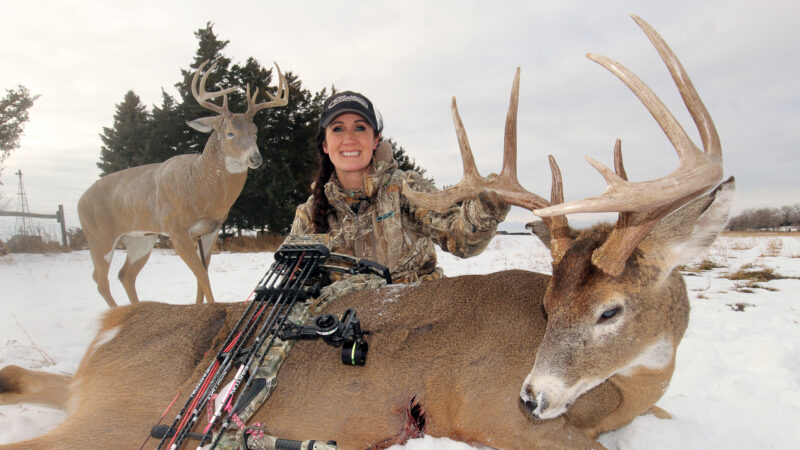
Of course, decoying requires common sense. Don’t hunt with a decoy during firearms seasons, as it poses safety risks that simply aren’t worth it. If you’re hunting on private land and believe you can safely hunt with a decoy during a firearms season, you’ll be doing so at your own risk.
With all of that being said, late October through mid-November is probably the peak time to get a buck’s attention with a decoy. But, as Bachman has proven, decoying can be highly effective all the way through the middle of December.
Doe or Buck?
Should you configure your decoy as a buck or doe? That’s up to you, but here are some things to mull over. I had my bow-mounted decoy configured as a doe in the opening anecdote, but I believe having the antlers attached would’ve garnered a similar response from the buck, although he likely would come head-on rather than circle me.
That being said, most of the folks I know who are regularly successful with decoys use buck decoys. Testosterone-crazed bucks look for any excuse to battle it out with another buck, so presenting a subordinate buck gives you high odds of triggering a response. And, if you use a highly realistic decoy such as the Dave Smith that Bachman uses, a buck usually gets so focused on it that your odds of being detected while drawing back drastically decrease.
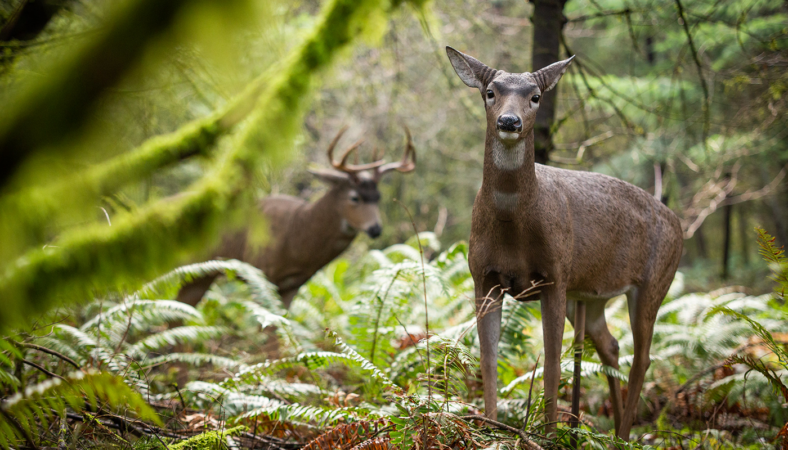
Today, if I’m using one decoy, it’ll be a buck. But, if I’m using two decoys, I like to set a 3-D buck decoy and then tuck myself in the weeds 20-25 yards away with the Ultimate Predator configured as a doe on my bow. This not only simulates a buck locked down with a hot doe, but it also affords me the option to hunt in a virtually wide-open habitat where a treestand or ground blind just won’t work.
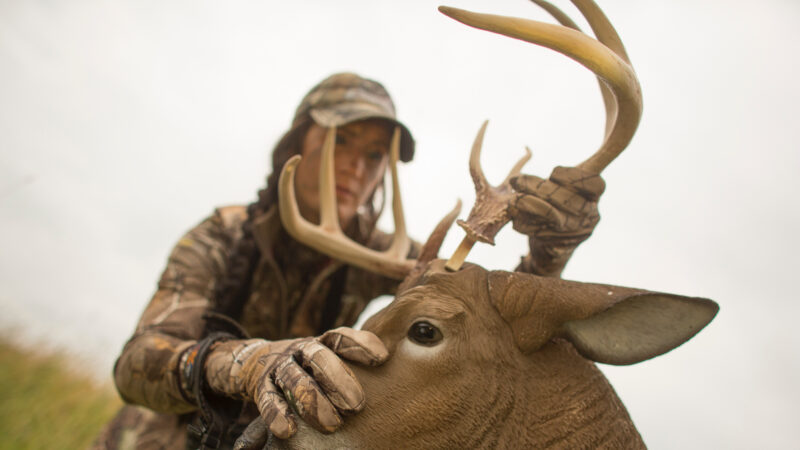
Setup Details
The wind is arguably the most critical consideration when hunting over a decoy. It’s slightly complicated to get everything to come together just right for a perfect setup. You have to make some calculated assumptions as to where bucks will appear and the direction they’ll use to approach the decoy. The setup has to be such that an approaching buck never gets a single whiff of your human scent. In some cases, your wind will barely be missing the buck. If you want a visual perspective as to how the wind is distributing your scent, get HuntStand Pro Whitetail and reference HuntZone, which provides a scent cone overlay at your exact stand/blind location.
Another way to spice up your decoy setup is by using scents. First, eliminate scent from transporting the decoy using a scent-elimination spray. You can apply dominant buck urine or a scrape blend underneath the decoy. You can also lace the area around the decoy with doe-in-heat. Bachman’s favorites are by Wildlife Research Center. Be sure to read the regulations, as real deer scent is prohibited in some states, limiting you to artificial scents.
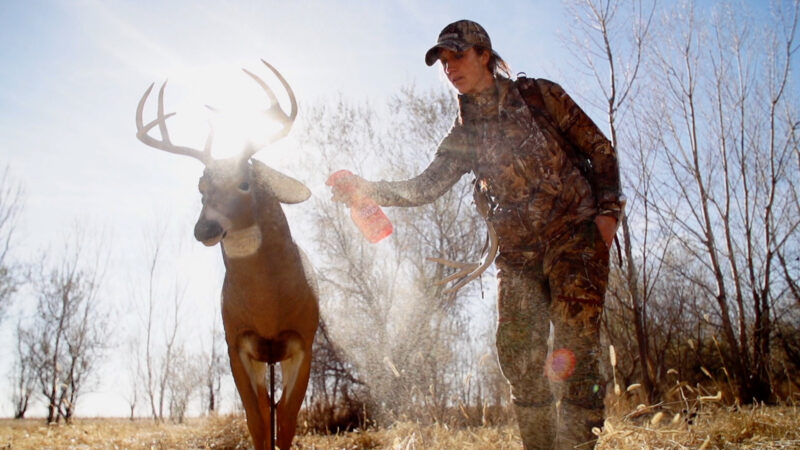
Give It a Roll
As I mentioned earlier, decoying might seem like something that the “pros” do on outdoor TV. But, the fact is that anyone can decoy deer within bow range with a little know-how and by doing it at the right time of the season. Give it a roll when the time is right this fall, and you might get an amazing 20-yard shot opportunity at a hair-raised buck.
Watch the video below for a look at buck coming to the decoy…

 By
By 